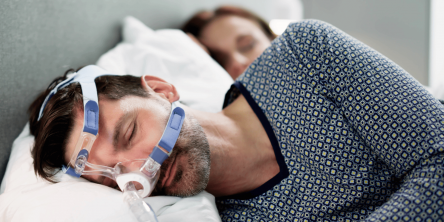What You Need To Know About 3D Abdominal Liposuction

Maintaining a slim figure stays a top priority regardless of a person’s gender or age. The abdomen often accumulates all the stubborn fat, mostly after drastic weight gain or childbirth. As we age, fat starts to gather around the stomach, back, flanks, lower abdomen and upper abdomen, which causes the stomach to project outwards and give an overall bulky appearance. However, this procedure can also be used on young people with excessive fat layers. 3D Abdominal Liposuction transforms and contours the stomach (abdomen) making it more flat, slimmer and attractive.
However, abdominal fat can accumulate in two different levels. It is one being the Superficial Abdominal Fat and the other being the Deep Abdominal Fat.
Superficial abdominal fat: It accumulates beneath the skin and above the abdominal muscles. It is the subcutaneous fat layer.
Deep abdominal fat: It gathers in the abdominal cavity of the intestines. It is also called intestinal fat.
Subcutaneous fat layer can easily be removed by Liposuction whereas the intestinal fat can only be diminished by weight loss, diet and exercise. For those who have excessive subcutaneous fat layer, 3D abdominal liposuction is the ultimate cosmetic surgery.
How is 3D Liposuction different?
3D-Lipo offers multiple dimensions to fat loss and targets the stubborn fat cells and cellulite around the abdomen. These methods include Cavitation and Cryolipolysis for decreasing inches from the body; Radio frequency for skin tightening, and 3D dermology for removing cellulite.
Furthermore, in addition to these, there are other ways of fat removal as well. Those involve necrotic cell death by damaging fat cells with heat, laser or any chemical injections. However, there remains a potential risk of damaging the surrounding tissues.
3D Liposuction offers an accurate, instant and long-term result sans pain and any harm. It is the most carefully done procedure in liposuction.
What is 3D Cavitation?
3D Cavitation is an advanced technological equipment that helps remove the localized fat from in and around abdomen. It does not require any form of anesthesia, patients do not need to be hospitalized, it leaves no scars, with no downtime required and it remains a risk free procedure.
What happens during 3D-liposuction?
Cavitation is a natural phenomenon using ultrasound waves. This process causes severe disruption of the adipose cells and breaks down the fat cell membrane. The remaining content is then disposed off via the lymphatic system and the liver. The uniqueness of cavitation is that you can see the results from the first day of treatment.
Cryolipolysis like Cavitation, targets specifically the fat cells. By lowering the temperature to -6ᵒC, it pinpoints the content of fat cells and causes them to crystallize. The left-out content is disposed off naturally through the body. No other structure of the body is affected by it and results are seen in two months.
Radio frequency is an important function of 3D-lipo. It enables not only skin tightening for the face but also for the body. The concentration of collagen fibers and the regeneration of collagen and elastin deposits tighten the skin layers creating a smoother and healthier looking skin.
3D dermology specifically targets cellulites by utilizing vacuum and skin rolling, but it can be used alone as a standard procedure.
How long does abdominal liposuction last?
It is very important to work out and maintain a healthy diet in order to avoid accumulation of fat in the abdomen and any parts where liposuction is done. Otherwise, it is a guaranteed permanent procedure.
You can walk away healthy, slim, ever more attractive with a boost of self-confidence. Enjoying summer in all the amazing dresses has gotten a lot easier.
Similar Articles
Learn about the types of dental fillings, their pros and cons, and how to choose the best option for your oral health needs.
Recovery from addiction is more than just a singular event; it's a multifaceted journey that requires balance and commitment. It's about transforming one's lifestyle, adopting healthier habits, and embedding oneself in a supportive community
Children bring boundless energy and joy, yet moments of concern can arise, particularly regarding their health and development. One such concern is head tilt, which may appear as a slight angle of the head to one side. While it might seem innocuous, a persistent head tilt could indicate underlying musculoskeletal issues.
Find the best scoliosis clinic for your needs. Learn key factors like expert care, personalized treatments, and advanced technology to support your spine health.
Discover the challenges and strengths of living with autism as an adult. Learn strategies to build confidence, find support, and thrive with ASD.
Learn how digital sanitiser displays combine hygiene and communication, revolutionising public health with innovative LED signage and engaging educational content.
Unwanted hair can be a persistent problem, requiring constant maintenance through shaving, waxing, or plucking.
Learn about the life-saving importance of blood plasma donation, its medical uses, and how you can get involved to make a difference in saving lives.
CPAP is a medical device; its full form is Continuous Positive Airway Pressure (CPAP). The treatment of patients using CPAP is CPAP therapy, and yes, it does work.









